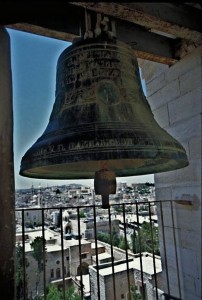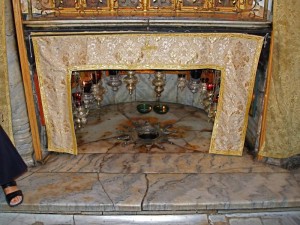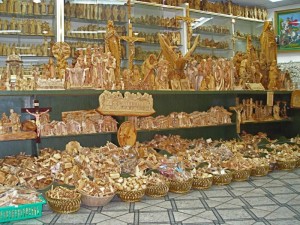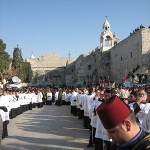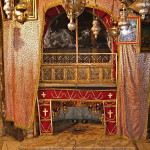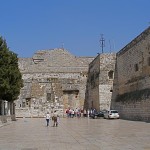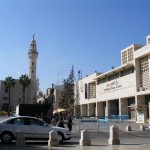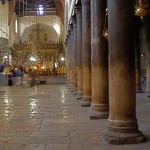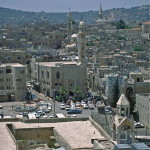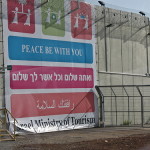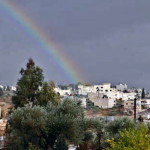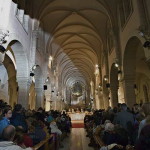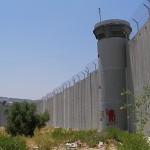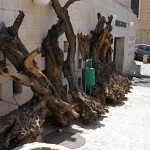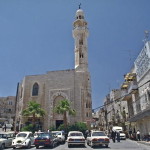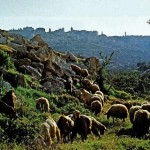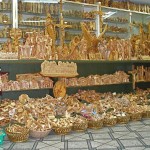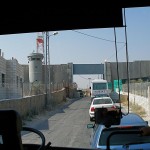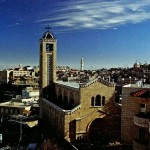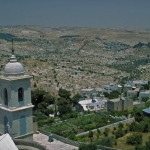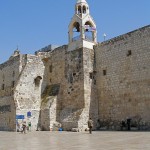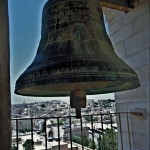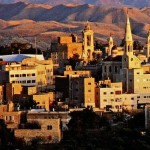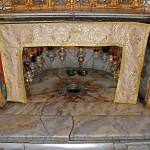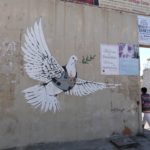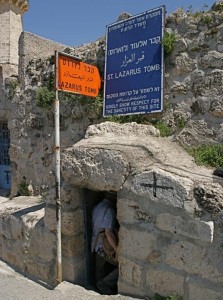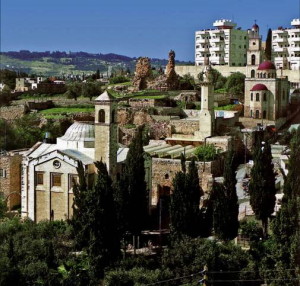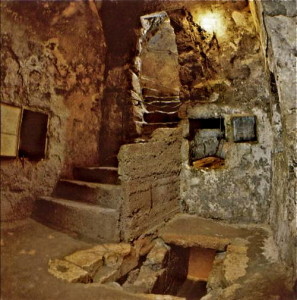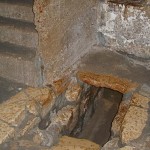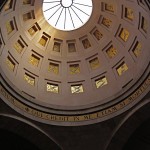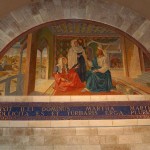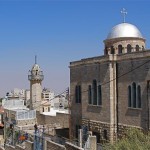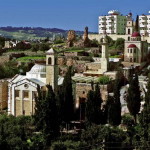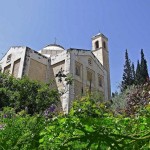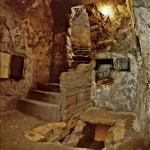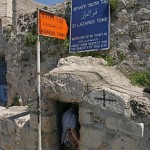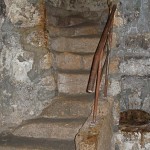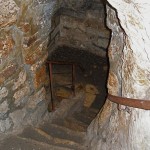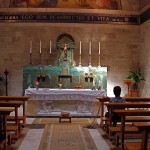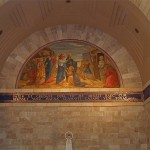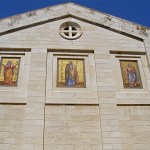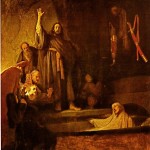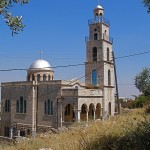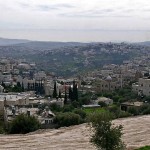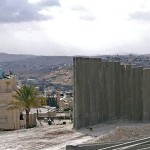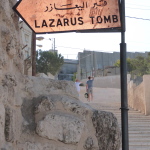West Bank
The West Bank city of Bethlehem, about 9km south of Jerusalem, is celebrated by Christians as the birthplace of Jesus Christ.
Here Mary gave birth in a cave used for animals. Here the local shepherds came to worship the baby, and here the Three Wise Men from the east came to pay homage and present their gifts.
Here too, 1000 years before Christ, Bethlehem was the birthplace of David, Israel’s second king. Here David was anointed as king by the prophet Samuel after being brought in from tending his father’s sheep.
The city of Bethlehem (in Hebrew its name means “house of bread”) perches on a hill at the edge of the Judaean desert. Bedouin from the desert rub shoulders with pilgrims and tourists among a mix of cultures in its town market and its narrow, ancient streets.
Cave can be visited
The Gospel references to Christ’s birth are sparse. The physician Luke gives most information: “And so Joseph went from the town of Nazareth in Galilee to Judea, to David’s town of Bethlehem — because he was of the house and lineage of David — to register with Mary, his espoused wife, who was with child . . . . She gave birth to her first-born Son and wrapped him in swaddling clothes and laid him in a manger, because there was no room for them in the place where travellers lodged.” (Luke 2:4,7)
The cave where the birth took place and the manger stood can now be visited underneath the huge Basilica of the Nativity. This is the oldest complete church in the Christian world.
During the 20th century, Bethlehem was controlled in turn by Turkey, Britain, Jordan and Israel. Hostilities led to thousands of displaced Palestinians living in official refugee camps nearby.
In 1995 Bethlehem came under the administration of the Palestinian Authority, though Israel retained control of entrances and exits. During times of Israeli-Palestinian conflict, the city has seen many confrontations.
Israel’s construction of the separation wall has severely affected Bethlehem’s economy and the movements of its residents. The barrier runs along the city’s northern side, within metres of houses.
Most residents are Muslims
Because of Christian emigration, Bethlehem now has a Muslim majority. The Mosque of Omar is a prominent landmark.
The remaining Christians include Latin, Syrian, Melchite, Armenian and Maronite Catholics; Greek, Syrian and Armenian Orthodox; and a variety of Protestant denominations. Many religious institutions are present, including Bethlehem University, founded under the direction of the Vatican.
Maintaining the Christmas spirit, Franciscan friars daily celebrate the Eucharist in the Grotto of the Manger and at noon perform a procession around the holy places.
Bethlehem’s residents, who depend largely on pilgrims and tourists for their livelihood, are known for their olive wood carvings, mother-of-pearl jewellery (a craft introduced by the Franciscans) and distinctive embroidery.
In the words of one pilgrim, Della Shenton, “Bethlehemites are cheerful, peaceful, gentle people, who have welcomed pilgrims for centuries: They now stand waiting for visitors. Jesus Christ was born here, their expressions appear to say; so where are all the Christians?”
Sites in the Bethlehem area:
Church of St Catherine of Alexandria
In Scripture:
Birth of Messiah prophesied: Micah 5:2-5
The birth of Jesus: Luke 2:1-20; Matthew 1:18-25
The visit of the Wise Men: Matthew 2:1-12
Massacre of the Holy Innocents: Matthew 2:16-18
- Catholic procession in Manger Square, Bethlehem, on Christmas Eve (Darko Tepert)
- Grotto of the Nativity (Darko Tepert)
- Church of the Nativity, Bethlehem (Seetheholyland.net)
- Bethlehem Peace Centre across Manger Square (Seetheholyland.net)
- Stout pillars in the Church of the Nativity (Seetheholyland.net)
- Bethlehem city centre (© Israel Ministry of Tourism)
- Ministry of Tourism sign on separation wall near Bethlehem (James Emery)
- Rainbow over Bethlehem (© Custodia Terrae Sanctae)
- Christmas Midnight Mass in St Catherine’s Church (© Custodia Terrae Sanctae)
- Separation wall near Bethlehem (Seetheholyland.net)
- Olive wood stacked for Bethlehem carvers (Seetheholyland.net)
- Mosque on Bethlehem’s Manger Square (© Israel Ministry of Tourism)
- Sheep graze in fields around Bethlehem (© Custodia Terrae Sanctae)
- Olive wood products in a Bethlehem souvenir shop (Seetheholyland.net)
- Vehicles queue at a checkpoint in the separation wall (Seetheholyland.net)
- Church steeples and mosque minarets in Bethlehem (© Custodia Terrae Sanctae)
- Bethlehem landscape (© Israel Ministry of Tourism)
- Tower of Armenian monastery on Manger Square (Seetheholyland.net)
- Church bell at Bethlehem (© Israel Ministry of Tourism)
- Bethlehem with the Judaean Desert in the background (© Custodia Terrae Sanctae)
- Star marking Jesus’ birthplace, in the Grotto of the Nativity (Seetheholyland.net)
- Peace symbol among graffitti on separation wall in Bethlehem (Seetheholyland.net)
References
Freeman-Grenville, G. S. P.: The Holy Land: A Pilgrim’s Guide to Israel, Jordan and the Sinai (Continuum Publishing, 1996)
Gonen, Rivka: Biblical Holy Places: An illustrated guide (Collier Macmillan, 1987)
Inman, Nick, and McDonald, Ferdie (eds): Jerusalem & the Holy Land (Eyewitness Travel Guide, Dorling Kindersley, 2007).
Joseph, Frederick: “Bethlehem”, Holy Land, winter 2002.
Murphy-O’Connor, Jerome: The Holy Land: An Oxford Archaeological Guide from Earliest Times to 1700 (Oxford University Press, 2005)
Petrozzi, Maria Teresa: “The Nativity Grotto”, Holy Land, winter 1997.
Shenton, Della: “Go now to Bethlehem”, The Tablet, London, December 16, 2006.
Wareham, Norman, and Gill, Jill: Every Pilgrim’s Guide to the Holy Land (Canterbury Press, 1996)
External links

